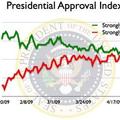The U.S. government will offer hundreds of billions of dollars in equity and loan guarantees to investors who bid against one another to buy troubled assets from banks, officials said today.The "Public Private Investment Plan" detailed this morning, a long-awaited but risky piece of the government's financial stabilization strategy, will pour government money into private investment funds as a way to move loans from the balance sheets of banks to those of long-term investors.
Under the plan, the government and private investors will invest together to buy up between $500 billion and $1 trillion worth of real estate-related loans and securities from banks. The government will use up to $100 billion from the Troubled Assets Relief Program, matched by private funds, to capitalize the purchases.
The hope is that instead of hoarding cash in case those assets continue to lose value, banks will resume lending money once the toxic assets are off their books.
The government and private investors, meanwhile, will hold the assets for the long term, and stand to either make or lose money depending on how the economy does.
The stock market rose sharply this morning, a sign that Wall Street was optimistic about the plan.
President Obama noted the plan today while speaking to reporters after his regular economic briefing. "We believe that this is one more element that is going to be absolutely critical in getting credit flowing again," Obama said. "It's not going to happen overnight. There's still great fragility in the financial systems, but we think that we are moving in the right direction.
"And we are very confident that, in coordination with the Federal Reserve and the FDIC, other relevant institutions, that we are going to be able to not only start unlocking these credit markets, but we're also going to be in position to design the regulatory authorities that are necessary to prevent this kind of systemic crisis from happening again."
With the government financial support, private investors could end up putting down only about 7 percent of the price of an asset, with the rest contributed by the government and by private lenders who receive government guarantees.
The government and private investors would share in any profits from their joint investments, and the government would not have to come up with cash to cover loan guarantees unless an asset loses enough value that the initial private investment is wiped out.
Treasury Secretary Timothy F. Geithner told reporters this morning that, while risky, he saw the approach as better than any available alternative. "There is no doubt the government is taking on risk," he said. "You can't solve a financial crisis without the government taking on risk."
Treasury officials are betting that the current low market prices for troubled bank assets are driven more by excessive fear than the reality of how the economy will perform, and that the new purchases will help kick-start those markets and return them to more normal functioning.
"This is a market that's basically disappeared," said White House economic adviser Christine Romer, who appeared on CNN and all three network news programs early this morning. In an opinion piece in this morning's Wall Street Journal, Geithner wrote that the new program will, over time, provide a market for these assets "that does not now exist" and will therefore "improve asset values, increase lending capacity by banks, and reduce uncertainty about the scale of losses on bank balance sheets." Geithner wrote that the new government program should make it possible for banks to raise private capital, enabling them to return U.S. government investments that have come to them through bailout funds.
The program provides capital for new investment funds, matched with by private investors such as hedge funds. The Federal Deposit Insurance Corp. will guarantee debt issued by those private funds, meaning that lenders probably would view them to be as nearly as safe as lending to the U.S. government.
The funds will compete against one another at auction to acquire the troubled loans, a process that the government hopes will drive up the price enough to create a price floor for the questionable loans that have been dragging down the financial sector. "It is going to be an open bid. That's part of why we're going in with the private sector," Romer said. "They're going to have money on the line just like we are and the whole idea is to make sure we don't overpay for them."
It works like this, according to a Treasury Department fact sheet: Imagine that a bank wants to sell mortgage loans with a $100 million face value. The FDIC would auction the loans to private bidders. Suppose the winning bidder offered $84 million. The private investor would put up $6 million, Treasury would put up $6 million, and the FDIC would guarantee $72 million worth of loans.
If investors select assets wisely, and the assets prove to have good value over the long run, the loans will be repaid, and the hedge fund and Treasury Department split the remaining profits in proportion to their original investment. If the investors choose poorly, or the assets fall significantly in value, the government shares in the initial loss and potentially is required to spend additional money to cover the loan guarantees.
The idea is to get those assets off the books of banks and onto the books of long-term investors who could lose money without causing broader economic damage.
Shortly after the new program was announced, Bill Gross said Pacific Investment Management Co., the world's biggest bond manager, will participate, Bloomberg news service reported. "This is perhaps the first win/win/win policy to be put on the table," Gross said in an e-mailed statement.
Romer stressed that the program being discussed today must be seen in context of the other expensive programs the Obama administration is launching to stem the U.S. and global financial crisis.
"This is one more piece," Romer said. "It's also not going to be the only piece."
Geithner is in the hot seat as he rolls out the new program, following a negative reaction to his initial financial rescue proposal in February and the outcry last week over bonuses paid to executives from the American International Group, which has received billions in taxpayer-funded government bailouts.
With today's announcement, Treasury officials are aiming to reclaim some momentum in solving the breakdown in the financial system.
One particularly treacherous hurdle for the plan is persuading the private investors to come to the table -- a key to its success. After last week's high-volume debate over bonus payments to AIG employees, hedge funds and private equity firms might be reluctant to play ball, for fear that the government will change terms of the deal retroactively.
By Neil Irwin
Washington Post Staff Writer
Monday, March 23, 2009; 12:50 PM



